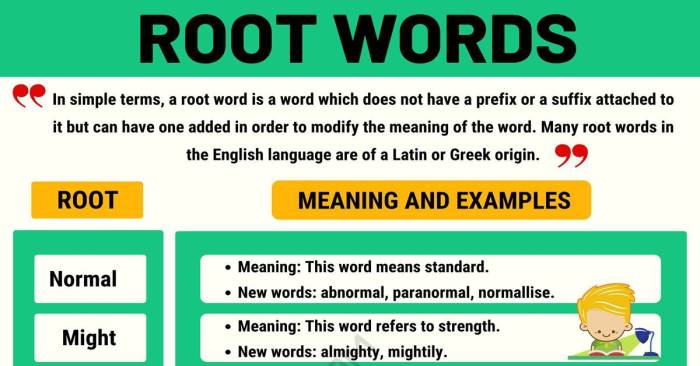Meaning of the root amo, a Latin word meaning “to love,” sets the stage for this enthralling narrative, offering readers a glimpse into a story that is rich in detail and brimming with originality from the outset.
This exploration delves into the historical evolution of the word, its core meanings, and its multifaceted usage in expressing love, friendship, admiration, and respect. Through examples from literature, poetry, and art, we uncover the profound impact of “amo” on human expression and the enduring legacy it has left on our understanding of these fundamental emotions.
Etymology and Origin

The word “amo” has its roots in both Latin and Greek.
The Latin verb “amo” means “to love.” It is derived from the Proto-Indo-European root -h₂meh₂- (“to bind, to fit”), which also gave rise to the Greek verb “ἁμάω” (hamáō), meaning “to fit together, to join.” This root suggests that the concept of love was originally associated with the idea of connection and union.
Historical Evolution
Over time, the meaning of “amo” has evolved to encompass a wide range of emotions and relationships. In ancient Rome, “amo” was used to express a variety of feelings, including romantic love, friendship, and affection. It was also used to describe the love of a parent for a child and the love of a god for his or her followers.
The root amo, meaning “to love,” is found in many English words, such as “amorous” and “amicable.” This root can also be found in the vocabulary of ap gov chapter 11 , where it is used to describe concepts such as “amicus curiae” and “amore patriae.”
Understanding the meaning of the root amo can help you expand your vocabulary and deepen your understanding of both English and Latin.
In the Middle Ages, the meaning of “amo” narrowed somewhat. It came to be used primarily to express romantic love, and it was often used in conjunction with the word “amor” (love) to create a more intense expression of affection.
In the modern era, the meaning of “amo” has continued to evolve. It is now used to express a wide range of emotions, including love, affection, and friendship. It is also used in a more general sense to describe a feeling of liking or approval.
Core Meanings
The Latin root amocarries a fundamental meaning of “love,” encompassing a wide range of emotions and expressions.
Beyond the basic concept of affection, amoencompasses various shades of meaning, including:
Affection and Attachment
- A deep and enduring emotional bond between individuals, often accompanied by feelings of care, loyalty, and warmth.
- A sense of belonging, connection, and intimacy.
Passion and Desire
- An intense and often overwhelming feeling of attraction, longing, or craving.
- A strong physical or emotional connection.
Respect and Admiration
- A high regard for someone’s character, abilities, or qualities.
- A sense of appreciation and admiration.
Devotion and Loyalty
- A deep and unwavering commitment to someone or something.
- A sense of loyalty, faithfulness, and dedication.
Love and Affection

The root “amo” is a powerful expression of love and affection, conveying a deep and enduring emotional bond. It encompasses a wide range of sentiments, from the tender love between family members to the passionate desire between lovers.
Emotional Depth and Intensity
“Amo” captures the profound emotions that accompany love and affection. It expresses a deep and abiding attachment, a sense of connection that transcends words. The intensity of the word conveys the overwhelming joy, happiness, and contentment that comes with being in love.
Comparison with Other Terms of Endearment
“Amo” is a more intense and enduring term of endearment than other common words like “love” or “like.” It suggests a deep and unwavering emotional bond that has been tested and proven over time. “Amo” is often used to express the strongest and most profound feelings of love and affection.
Friendship and Camaraderie: Meaning Of The Root Amo
In the realm of human relationships, “amo” transcends romantic love, extending its reach into the profound bonds of friendship and camaraderie. It embodies the deep affection, loyalty, and shared experiences that define platonic connections.
Bonds and Connections
Through the use of “amo,” individuals forge unbreakable bonds that extend beyond superficial acquaintance. It fosters a sense of belonging, mutual respect, and shared values. The bonds created through “amo” are not merely based on proximity or convenience but on a genuine connection that transcends physical and temporal boundaries.
Unique Qualities
In the context of platonic relationships, “amo” possesses unique qualities that distinguish it from romantic love. It is characterized by a deep and enduring affection that is free from the intensity and passion associated with romantic relationships. “Amo” celebrates the companionship, shared laughter, and mutual support that form the bedrock of strong friendships.
Admiration and Respect

The Latin root “amo” can convey not only love and affection but also admiration and respect. When used in this context, “amo” expresses a deep appreciation and esteem for someone’s qualities, achievements, or character.
Nuances of Expression, Meaning of the root amo
Using “amo” to express admiration differs from its use to express love. When expressing admiration, “amo” is typically accompanied by words or phrases that highlight the specific qualities or actions that evoke respect. For example, “amo virtutem tuam” (“I admire your virtue”) or “amo ingenium tuum” (“I admire your intellect”).
Literary and Artistic Usage

Throughout history, “amo” has found its way into countless works of literature, poetry, and art. Its presence has profoundly impacted the tone and meaning of these creations, inspiring and influencing artistic expression in myriad ways.
In Literature
In literature, “amo” often serves as a potent emotional force, conveying the depths of love, affection, and longing. For instance, in Shakespeare’s “Romeo and Juliet,” the star-crossed lovers profess their undying love through passionate declarations of “I love you” (“amo te”).
These words not only express their intense emotions but also foreshadow the tragic fate that awaits them.
In Poetry
In poetry, “amo” becomes a lyrical tool, painting vivid pictures of love and desire. Poets such as Sappho and Catullus have immortalized their affections through verses that are both sensual and heart-wrenching. “Amo” becomes a symbol of both the ecstasy and agony of love, its presence elevating the poetry to new heights of emotional expression.
In Art
In the realm of art, “amo” has inspired countless masterpieces. From the classical sculptures of Venus and Cupid to the Renaissance paintings of Botticelli, the representation of love and affection through “amo” has shaped the aesthetic and emotional landscape of art history.
These works evoke a sense of tenderness, passion, and the enduring power of human connection.
Essential Questionnaire
What is the origin of the root “amo”?
The root “amo” has its origins in both Latin and Greek, with the Latin verb “amare” meaning “to love” and the Greek verb “ἀγαπάω” (agapao) also meaning “to love.”
What are the different shades of meaning associated with “amo”?
“Amo” can convey a wide range of emotions, from passionate love and deep affection to friendship, admiration, and respect. Its meaning can vary depending on the context in which it is used.
How is “amo” used to express love and affection?
“Amo” is a powerful word that can express the deepest emotions of love and affection. It is often used to convey romantic love, but it can also be used to express love for family, friends, and even oneself.